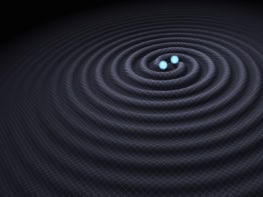
Update: 19 November 2020
Officials at the US National Science Foundation have decided to decommission the Arecibo Observatory as a result of the cable failure.
A second cable has failed at the iconic Arecibo Observatory in Puerto Rico – and engineering teams have been brought in to assess the remaining cables, which are holding up the telescope’s metal platform suspended above the 305 m-wide reflecting radio dish. According to a statement from the University of Central Florida, two of the remaining main cables seem to have wire breaks, increasing the likelihood of the tower platform falling and destroying the telescope.
It is not an end that this telescope deserves
Laura Spitler
Since it opened in 1963, the Arecibo Observatory has been crucial for radio astronomy and is currently the world’s second-largest single-dish telescope. On 10 August, however, one of the six 8 cm-wide auxiliary steel cables that support the telescope’s platform failed and crashed down, tearing a 30m gash through the main reflector dish.
The six auxiliary cables had been added in the 1990s to help balance the increased weight when the reflecting system was upgraded.
According to Arecibo director Francisco Cordova, the cable appears to have failed due to a manufacturing process error, adding that Hurricane Maria in 2017 and recent earthquake tremors have accelerated the degradation.
Following the first failure, the remaining cables should have held the additional load, but for a still-unknown reason, that did not happen. Compounding the issue, on 6 November one of four main cables snapped, transferring the load onto the remaining cables and so making them more likely to fail. Indeed, there are concerns that further auxiliary cables from the same manufacturer may be faulty, with two replacement cables due to arrive in Puerto Rico in December.
Crisis time
The Arecibo Observatory is working with three engineering firms to assess the situation using drones and remote cameras. They will look at ways to reduce that load by temporarily repairing the August failure by either adding a new cable or relieving some of the load from the tower.
But these options will take several weeks and any temporary or permanent fix must be proposed to, approved by, and funded by the National Science Foundation – one of the organizations that manages the observatory together with the University of Central Florida, Universidad Ana G. Méndez and Yang Enterprises Inc.

Arecibo observatory saved from closure
“It’s a crisis,” says Michael Nolan of the University of Arizona and a former Arecibo director. “But I’m cautiously optimistic that they will find a way to take that tension off [the remaining cables].”
Laura Spitler from the Max Planck Institute for Radio Astronomy in Bonn, Germany, who has used the instrument to study transient radio sources, says losing the telescope would be a devastating blow to astronomy. “It would mean that one of the most important telescopes is gone,” she says. “It is not an end that this telescope deserves.”



